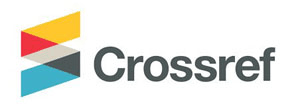Arenga Pinnata Fiber Reinforced Composite: A Review On Characteristics And Mechanical Properties
Keywords:
Arenga Pinnata, Fiber, Composites, Mechanical PropertiesAbstract
Natural fibers as composite reinforcement have been widely used because they are eco-friendly and sustainable. Arenga pinnata (AP), or Sugar palm tree, is cultivated in tropical regions and is thought to hold promise as a source of natural fibers. The potential use of fibers derived from the Arenga pinnata in a number of applications has been studied, especially as composite materials. This review focuses on the emerging use of Arenga Pinnata Fiber (APF) in several applications. A detailed discussion of its properties was highlighted. Aside from that, this paper also discusses the several treatments that have usually been applied to the Arenga Pinnata Fiber Reinforced Composites (APFRC) and their mechanical properties. APFRC is a material that possesses notable mechanical properties, is cost-effective, biodegradable, renewable, has a low density, has a high cellulose content, has long durability, and is also resistant to seawater. The performance of composite materials is primarily determined by their constituent elements and manufacturing techniques. Modifying the orientation of fibers also has a direct influence on the tensile strength, compression resistance, and elastic modulus of composites. Furthermore, it is expected that it will have the capability to produce APFRC, serving as a promising substitute for traditional polymers in diverse applications, particularly in engineering fields like automotive, marine, medical industries, and sports, serving as substitutes for materials derived from petroleum. Thus, it is anticipated to have the ability to make a significant contribution towards achieving sustainable development goals.






